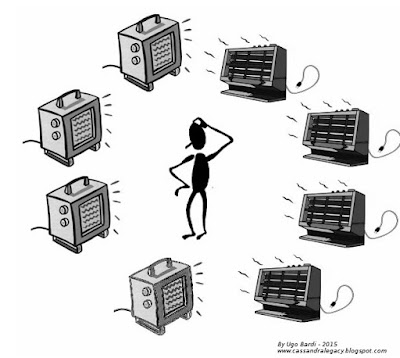Global warming: how much heat, exactly?
It is often difficult to visualize what we are doing to our planet. But a simple calculation shows that the greenhouse effect generated by fossil fuels can be seen as the equivalent of turning on more than a hundred 1 kW electric heaters for each human being on the earth. And we can’t turn them off!
If you look at the way climatologists describe global warming, you’ll see that they use a lot the term “forcing”; that is, the additional effect of human activities to the natural heating from sunlight. Not all forcings increase temperatures, some tend to reduce it; for instance, atmospheric particulate. The overall result is called “imbalance” or “net forcing.” You can think of a forcing in terms of someone trying to budge a person who doesn’t want to move. If the person pushing is stronger, the net force will cause the person being pushed to move. In the case of climate, the warmingforcings are stronger than the cooling forcings, and the net result is a rise in temperature.
As we keep emitting CO2 and other gases, the greenhouse forcing effect increases, as you see in the figure below (Hansen 2011).
In this figure, forcings are measured in terms of W/m2 (watts per square meter), as it is generally done in climate science. Unfortunately, it is a kind of unit that doesn’t convey a feeling of the magnitude of what we are doing to our planet. A few watts per square meter are approximately equivalent to a single Christmas light, and that doesn’t look worrisome. But, if you take into account the effect on the whole planet (510 million km2), then the overall forcing is gigantic: from Hansen’s figure you obtain something like 1500 TW (terawatts, or trillions of watts) for greenhouse gas forcing and around 500 TW for the net forcing.
…click on the above link to read the rest of the article…
